
table of contents
- Types from A - C
- Types of D - J
- Types of K - R
- Types from S - Z
- frequently asked Questions
There are many native bird species. Some are brightly colored from head to toe. Other birds are monochrome or multicolored with a completely black head or cap.
In a nutshell
- Blackbird a widespread songbird in the garden
- playful common raven is the largest European raven bird
- Magpies are extremely intelligent
- Great tit is the largest tit species in this country
Types from A - C
Alpine chough (Pyrrhocorax graculus)
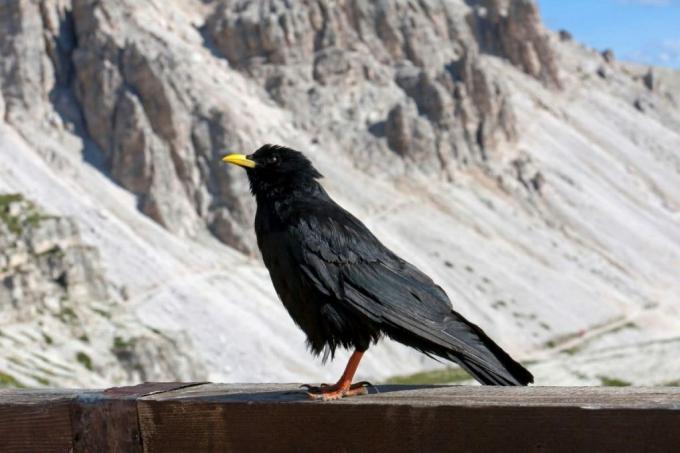
- Size: 37 to 41 cm
- Appearance: yellow beak bent upwards, red legs, otherwise completely black
- Occurrence: steep rock faces, scree slopes, lawns in the Alps
- Food: small soil insects, berries, seeds, carrion, human leftovers
- Special features: Appearance is reminiscent of the blackbird, very sociable, out and about in large groups
Blackbird (Turdus merula)
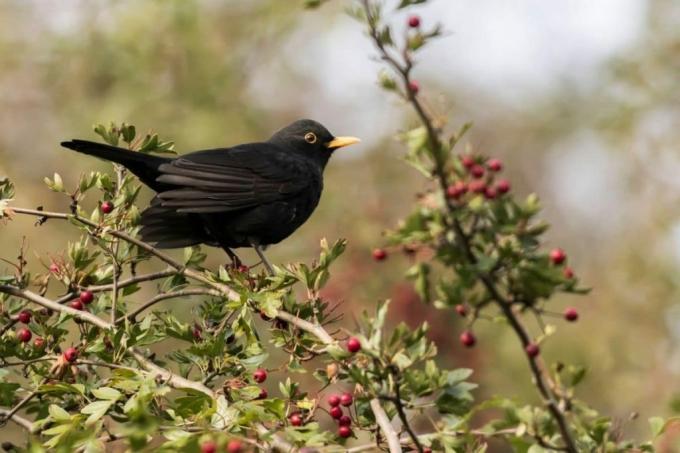
- Black Thrush
- Size: 24 to 27 cm
- Appearance: Males completely black with a yellow bill, females dark brown
- Occurrence: often found in gardens, not shy
- Food: worms, insects, snails, berries, seeds, fruits
- Special features: songbird, imitates whistles and other noises
White wagtail (Motacilla alba)
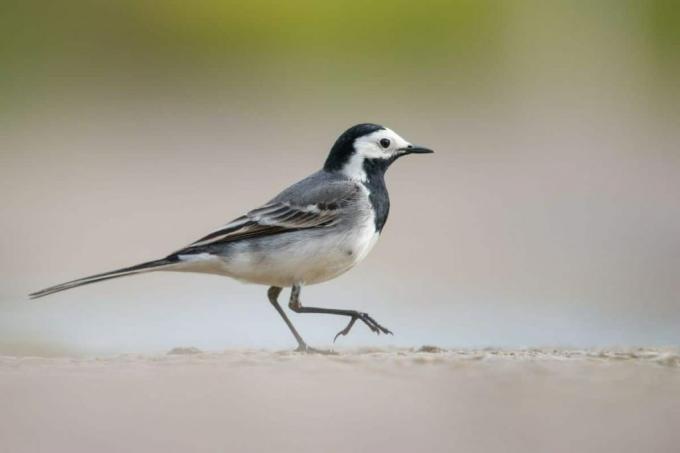
- Size: 16 to 19 cm
- Appearance: black head and chest, white face and belly, gray on top, black tail
- Occurrence: in dense bushes near water, open cultivated landscapes, fields, settlements
- Food: insects, larvae, worms, snails, seeds
- Special features: foraging mainly on the ground, tripping with quick steps
Coot (Fulica atra)
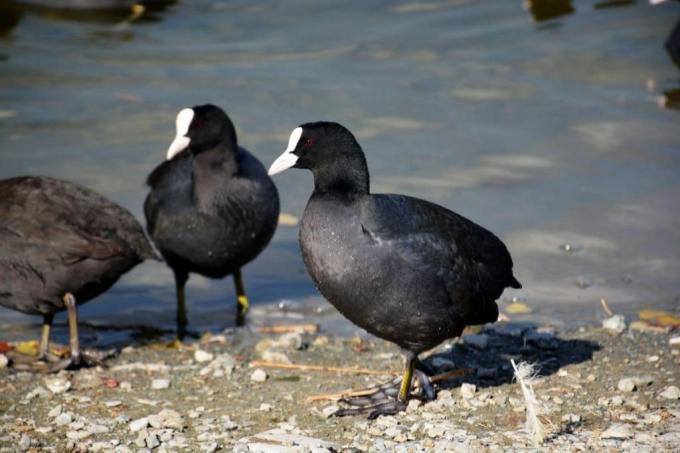
- Size: 36 to 42 cm
- Appearance: slate-gray plumage, black head, white beak, white forehead shield, large feet with swimming lobes
- Occurrence: Fresh water with floating plants and bank vegetation such as ponds, lakes, rivers
- Food: omnivores, parts of plants, reeds, cereals, insects, mollusks, fish, waste
- Special features: walking over water lilies, jerking head movements when swimming
Great Spotted Woodpecker (Dendrocopos major)
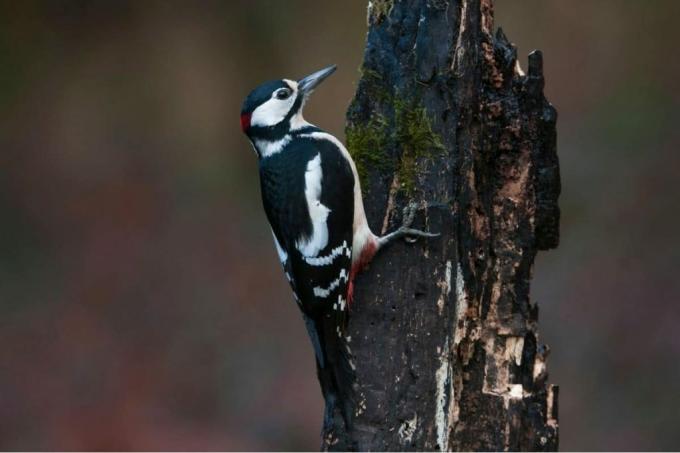
- Size: 20 to 24 cm
- Appearance: crown and neck black, white cheeks, red spot on the back of the head, upper side black, underside gray, red undercap
- Occurrence: deciduous and mixed forests, parks, gardens, avenues
- Food: insects, larvae, berries, nuts, tree sap, seeds
- Special features: curling trees in spring
Types of D - J
Jackdaw (Corvus monedula)
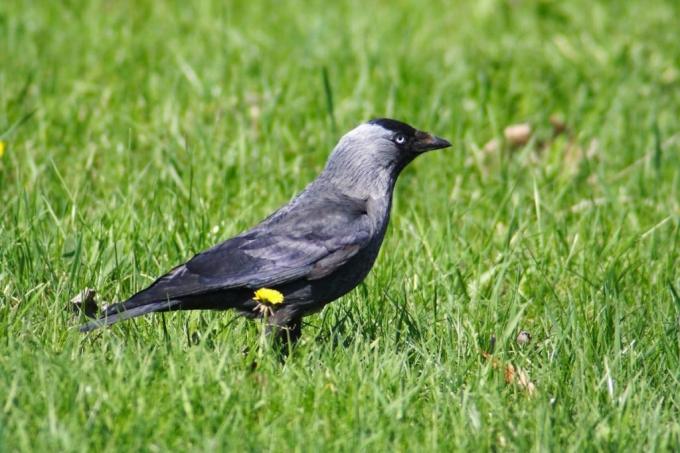
- Size: 33 to 39 cm
- Appearance: black headstock, shimmering metallic blue, black-gray plumage, short legs, short and thick beak
- Occurrence: settlement areas, parks, open areas
- Food: omnivores, mainly seeds and insects, as well as carrion, bird eggs, small vertebrates, human waste
Note: The birds with black heads reach speeds of up to 60 km / h in flight.
Magpie (pica pica)
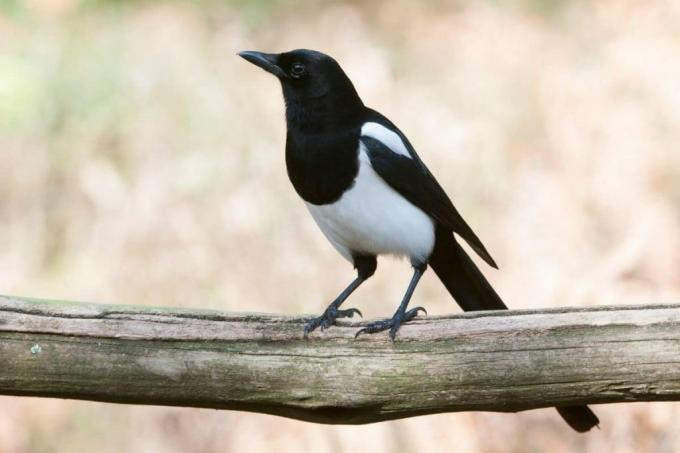
- Size: up to 51 cm
- Appearance: black and white plumage, completely black head
- Occurrence: bushy forests, open areas, parks, gardens
- Food: earthworms, insects, larvae, bird eggs, fruits, seeds, human waste
- Special features: curious, very clever, runs and hops a lot on the ground
Bullfinch or Bullfinch (Pyrrhula pyrrhula)
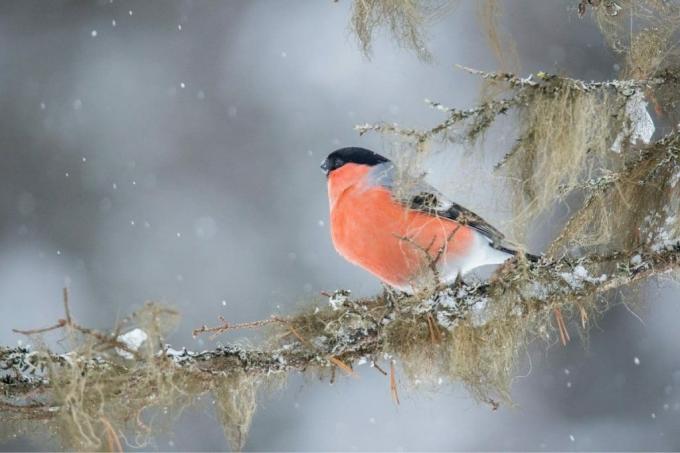
- Size: 15 to 19 cm
- Appearance: black head cap, white rump, males bright red breast and belly, females gray-brown
- Occurrence: coniferous woods
- Diet: soggy seeds, buds, insects
- Special features: often wandering around in family groups in autumn
Collared Flycatcher (Ficedula albicollis)

- Size: 12 to 13 cm
- Appearance: black head with white spot on the forehead, white collar, underside white, upper side black, females gray-brown
- Occurrence: orchards, gardens, parks, deciduous forests
- Diet: insects, larvae, berries
- Special features: catches flies in flight
Types of K - R
Common raven (Corvus corax)
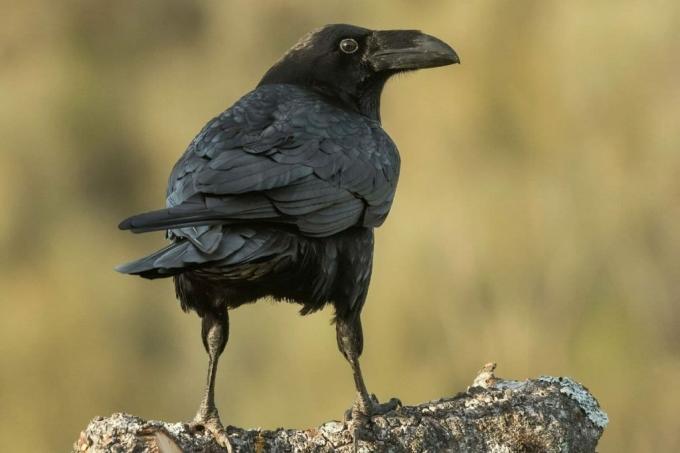
- Size: 54 to 67 cm
- Appearance: solid black, shiny blue-violet in the light, large head with strong beak
- Occurrence: Forests, semi-open landscapes, settlement areas
- Food: omnivores, predominantly animal food such as bird eggs, insects, small vertebrates, human waste
- Special features: very adaptable and playful, largest raven bird in Europe
Great tit (Parus major)
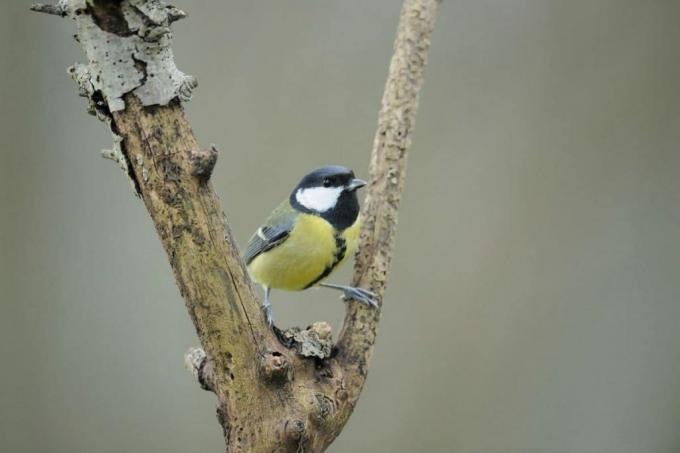
- Size: 13 to 15 cm
- Appearance: black head with white cheeks, yellow underside with black vertical stripes, back green-yellow, blue-gray wings with white band
- Occurrence: deciduous and mixed forests, parks, gardens
- Food: insects, larvae, spiders, caterpillars, seeds
- Special features: largest Titmouse Europe
Hooded crow (Corvus corone)
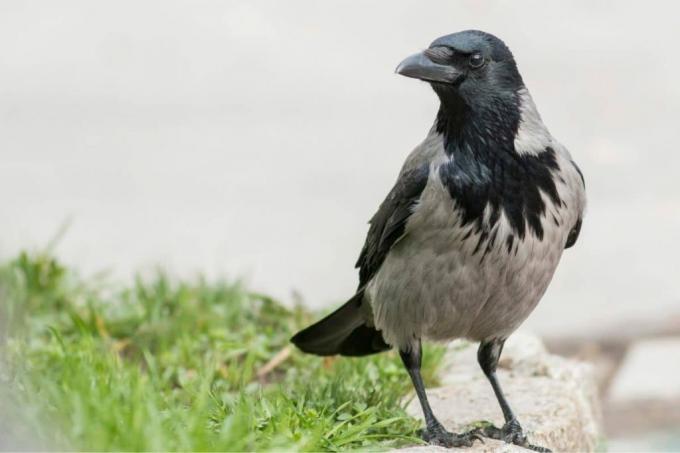
- Size: 46 to 50 cm
- Appearance: black head, black breast, wings and tail, remaining plumage gray
- Occurrence: mainly in settlement areas, parks
- Food: omnivores, insects, larvae, bird eggs, small birds and fish, berries, carrion, human waste
- Special features: in winter in flocks with other corvids such as jackdaws and rooks.
Types from S - Z
Stonechat (Saxicola rubicola)
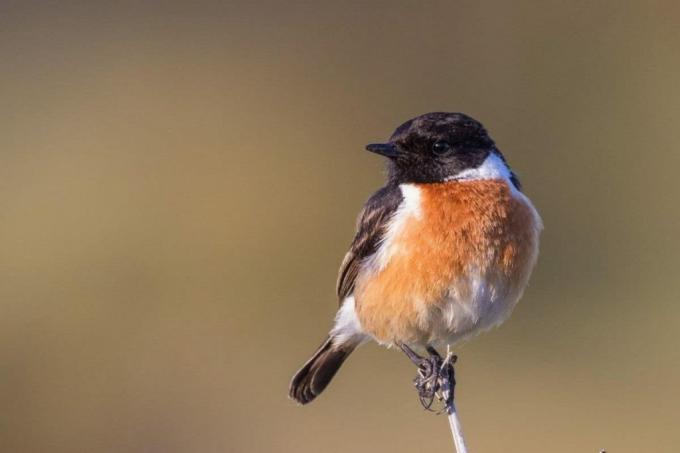
- Size: 11 to 13 cm
- Appearance: Males black head with white spot on the neck, orange-brown underside, dark tail, light-colored wings
- Occurrence: Meadows, wasteland, open areas, moors
- Food: insects, spiders, worms
- Special features: ground-breeder, classified as endangered on the red list in Germany
Rook (Corvus frugilegus)

- Size: up to 46 cm
- Appearance: completely black with a reddish sheen, pointed beak, throat pouch below the beak for transporting food
- Occurrence: open arable and meadow land with trees and shrubs
- Food: seeds, fruits, slugs, earthworms, beetles, mice, carrion
- Special features: Bird of the year 1986
Star (Sturnus vulgaris)
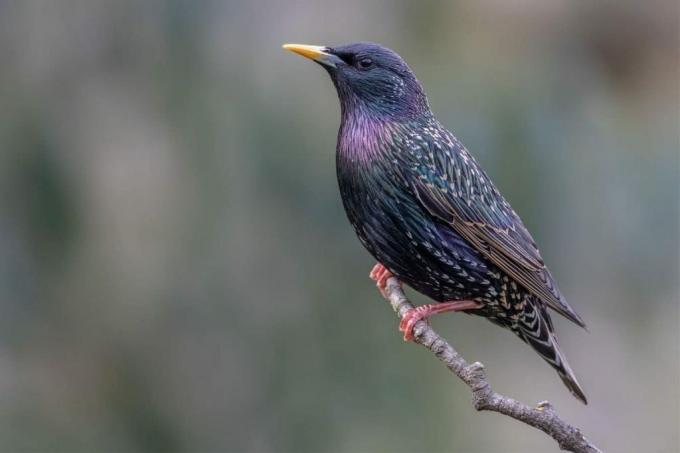
- Size: 19 to 22 cm
- Appearance: Plumage and head black basic color with a metallic blue sheen, plain dress with white spots, yellow beak
- Occurrence: gardens, forests, parks
- Diet: insects, earthworms, snails, fruits, berries
Note: The metallic shimmering birds with black heads are now considered endangered in Germany.
Coal Tit (Parus ater)

- Size: 10 to 11 cm
- Appearance: black head and chin flap, white belly, back and wings gray to bluish, white wing bands
- Occurrence: coniferous and mixed forests
- Diet: small insects, seeds of conifers
- Special features: belongs to the smallest species of titmouse
frequently asked Questions
They are said to hoard glittering objects such as jewelry in their nests. Scientific research has shown that magpies show no interest in such objects. On the contrary, they find “glittery things” rather frightening. However, it should not be forgotten that they steal young birds and eggs from other nests.
According to the EU bird protection directive from 1979, European bird species are protected. However, there are exceptions, since 1994 magpies, jays and carrion and hooded crows can be hunted, except during the breeding season. Hunting is regulated by the individual federal states.
He likes to sip tree sap. To do this, he has to chop small holes around the trunk or on the top of branches. These then fill with the juices. After a while, the wounds close and the so-called rings appear, hence the name marigolds or marigolds. curl.
